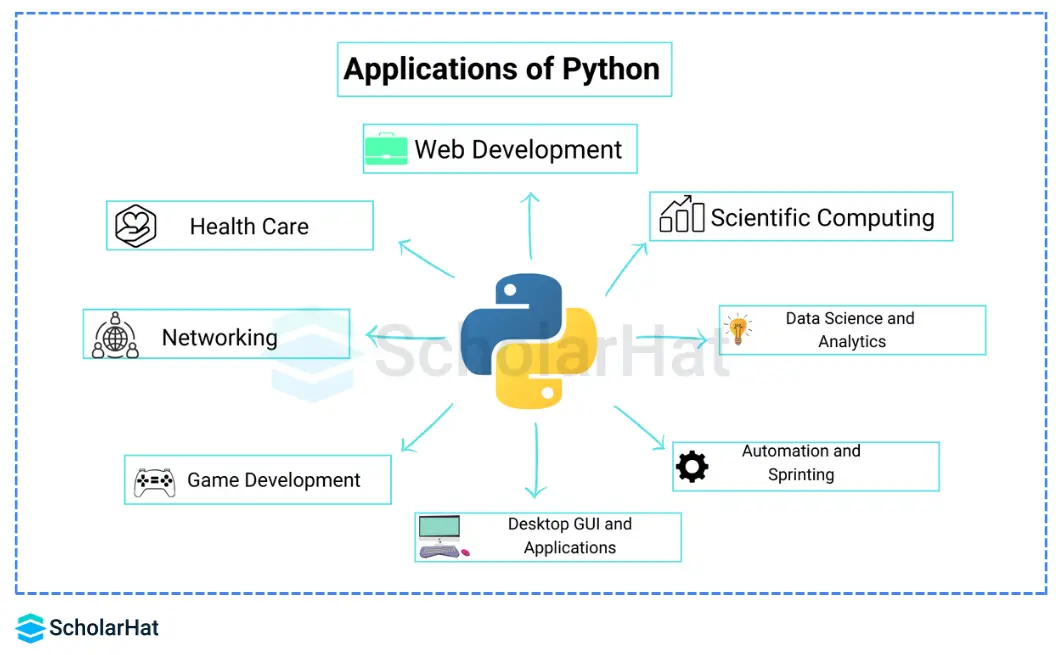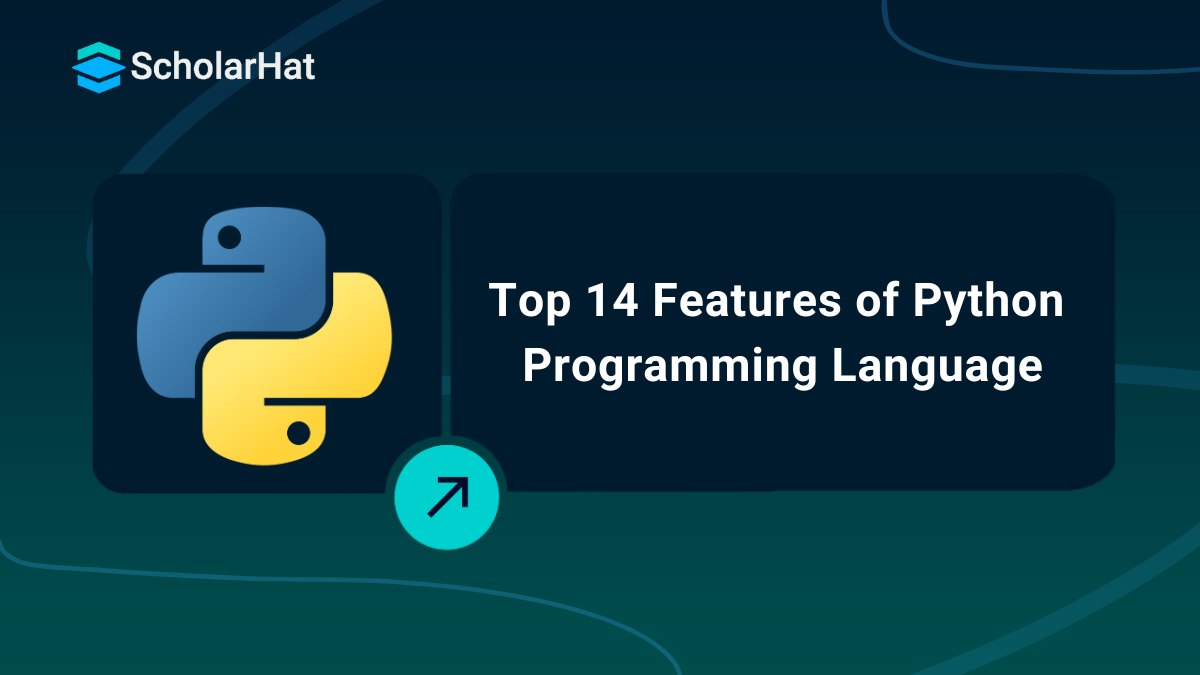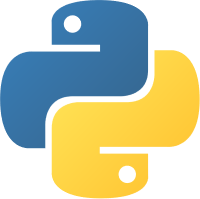12
DecPython Features: A Comprehensive Guide for Beginners
Python's features make it a powerful and versatile coding language that's gaining popularity among developers everywhere. Whether you're just getting started in programming or looking to add Python to your existing skillset, understanding the basics of this code can be beneficial for any tech-savvy individual.
In this Python tutorial, we'll explore what Python is and its Features.Now, let's first look at what Python is and the features of the Python programming language.
What is Python?
Python, created by Guido van Rossum between 1985 and 1990, is an interpreted, object-oriented programming language. It features dynamic typing and automatic garbage collection, making it easy to work with. Python is highly versatile, with a large standard library and strong support for integrating with other languages, perfect for everything from scripting to web apps and game development.
As one of the world's most popular programming languages, Python programming language is known for its easy syntax and cross-platform support. It's widely used by companies like Google and Facebook and favored in data science. With frameworks like Django and Flask, it helps build web apps quickly. Python is open-source under the GNU General Public License. Python is the #1 skill for tech’s future. Don’t lag—join our Free Python Course with Certification and code your way to success!
| Read More: How to Learn Python (Step-By-Step) in 2025 |
Top 14 Key Features of Python Programming:
In this section, we will see the key features of the Python programming language:
1. Free Open Source platform
Python is developed under an OSI-approved open-source license. It is completely free to use, even for commercial purposes. It costs nothing to download Python, which can be freely modified and re-distributed. Youcandownload Python fromthe official Python website.Python features simplicity and readability, which makes it perfect for beginners
2. Easy coding
It is a very high-level programming language and takes less effort to learn. Anyone can learn to code in Python in just a few hours or a few days. If you want to master the Python language, then all its advanced concepts, packages, and modules might take some more time to learn. However, learning basic Python syntax is not very hard compared to other popular languages such as C, C#, JavaScript, Java, etc. Also, it is very easy to code in Python. Anyone can learn Python basics in a few hours or days. It is a developer-friendly language.
3. Easy to Read & Supports OOP concepts
Learning Python is quite simple. As it was already established, Python’s syntax is straightforward. The code block of Python is defined by the indentations rather than by semicolons or brackets.Python supports object-oriented language and concepts such as classes, object encapsulation, etc.
4. Support for GUI
Graphical User interfaces (GUI) can be made using a module such as PyQt5, PyQt4, wxPython, or Tk in Python. PyQt5 is the most popular option for creating graphical applications with Python.
5. High-Level and Easy to debug
It's a high-level language with readable syntax, so writing and understanding code feels more intuitive. Plus, helpful error messages and tools make debugging a lot easier. This makes it great for both beginners and experienced developers.
6. Easy to Debug
Excellent information for mistake tracing. You will be able to quickly identify and correct the majority of your program’s issues once you understand how to interpret Python’s error traces. Simply by glancing at the code, you can determine what it is designed to perform. Advanced Python features include generators, decorators, and context managers
7. Portable and Integrated
Python is a portable language. In short, if we have Python code for Windows and if we want to run this code on other platforms such as Linux, Unix, and Mac, then we do not need to change it; we can run this code on any platform. Python features seamless integration with languages like C and C++, allowing smooth collaboration in mixed-language projects. Python features cross-platform compatibility, making code easily portable.
8. Interpreted Language with a large standard library
It is an Interpreted Language because Python code is executed line by line at a time. such as other languages, such as C, C++, Java, etc. The source code of it is converted into an immediate form called bytecode. It has a large standard library that provides a rich set of modules and functions, so we do not have to write our own code for everything. There are many libraries present in Python, for example, regular expressions, unit-testing, web browsers, etc.
One of the key Python features is its extensive standard library.Machine learning becomes easier, thanks to Python features like NumPy and TensorFlow support.
| Read More: Libraries in Python |
9. Dynamically Typed Language
In Python, the variable data type does not need to be specified. The memory is automatically allocated to a variable at runtime when it is given a value. Developers do not need to write int y = 20. if the integer value 15 is set to y. You may just type y=20. Developers love Python features like dynamic typing and automatic memory management.

10. Supports Community
Python has increased in popularity over the years because it is one of the biggest communities on StackOverflow. If you need any help with Python queries, the expert community is always there to answer them. A lot of different questions about Python have already been answered on these sites, and Python programmers can analyze them as per requirement. Python features strong community support and tons of third-party packages.
11. Extensible
The Python programming language is extensible, meaning you can add new features by writing parts of your code in other languages like C or C++. This Python features is useful for boosting performance or using existing C/C++ libraries, making Python more powerful and flexible..
12. Multiple Programming Paradigms Support
The Python programming language supports procedural, object-oriented, and functional programming. This Python features gives developers the flexibility to choose the best approach for each task. It improves code structure and scalability and is widely used for fast prototyping and automation.
- Procedural: Uses step-by-step instructions with reusable functions.
- OOP: Organizes code into objects with data and behavior.
- Functional: Emphasizes pure functions, immutability, and declarative style.
13. Automatic Memory Management
The Python programming language handles memory allocation and deallocation automatically with its built-in garbage collector. This Python features reduces memory leaks and boosts stability by freeing unused memory. It keeps applications efficient without adding extra coding effort. In this case, Python performs the following steps:
- Object Creation: When a new user logs in, Python automatically allocates memory to create the required objects.
- Reference Counting: It uses reference counting to keep track of how many variables point to each object.
- Garbage Collection: When the user logs out and no references remain, Python's garbage collector automatically frees the memory.
14. Multi-threading and Multiprocessing
The Python programming language supports concurrency through multi-threading and multiprocessing. These Python features allow it to run multiple tasks at the same time, improving performance in CPU-bound and I/O-bound operations. It helps build responsive and efficient applications.
- Multi-threading: Multi-threading lets you run multiple threads within a single process, allowing different parts of a program to run at the same time. It's especially useful for tasks like networking, user interface updates, or handling input and output operations.
- Multiprocessing: Multiprocessing allows Python programs to run multiple processes at the same time, each with its own memory and interpreter. It’s great for handling CPU-intensive tasks because it can fully use multiple cores, making programs faster and more efficient
 .
.
| Read More:10 Python Developer Skills you must know in 2025 |
Applications of Python
There are various Python applications in the field of programming, which are
- Python features support structural, functional, and object-oriented programming methods, making it suitable for building large applications.
- It can be used as a scripting language or compiled into byte code.
- Python features include dynamic type checking and high-level dynamic data types.
- Automatic garbage collection is a key Python features that improves memory management.
- Python can be easily integrated with C, C++, Java, COM, CORBA, and ActiveX.

Summary:
Python is an unambiguous, easy-to-read, general-purpose high-level programming language that considers paradigms of structured, procedural, and object-oriented programming. You can use Python and its features for web development, scientific computing, artificial intelligence, software testing, and much more.
The average Full-Stack Python Developer earns ₹35–50 LPA. Enroll in our Full-Stack Python Developer Course to level up!
Let the quiz begin! Pick the right answers and climb to the top!
Q 1: Which of the following is a key feature of Python?
FAQs
2. Supports Multiple Programming Paradigms.
3. Extensive Standard Library.
- Easy to Read and Learn. Python is a simple language to read and learn.
- Reduces Maintenance Costs.
- Avoid the Harm of Software Bugs.
- Wide Applicability.
- Easy Memory Management.
- Large Community.
- Asynchronous Coding.
- Integration with Other Languages.
Take our Python skill challenge to evaluate yourself!

In less than 5 minutes, with our skill challenge, you can identify your knowledge gaps and strengths in a given skill.






